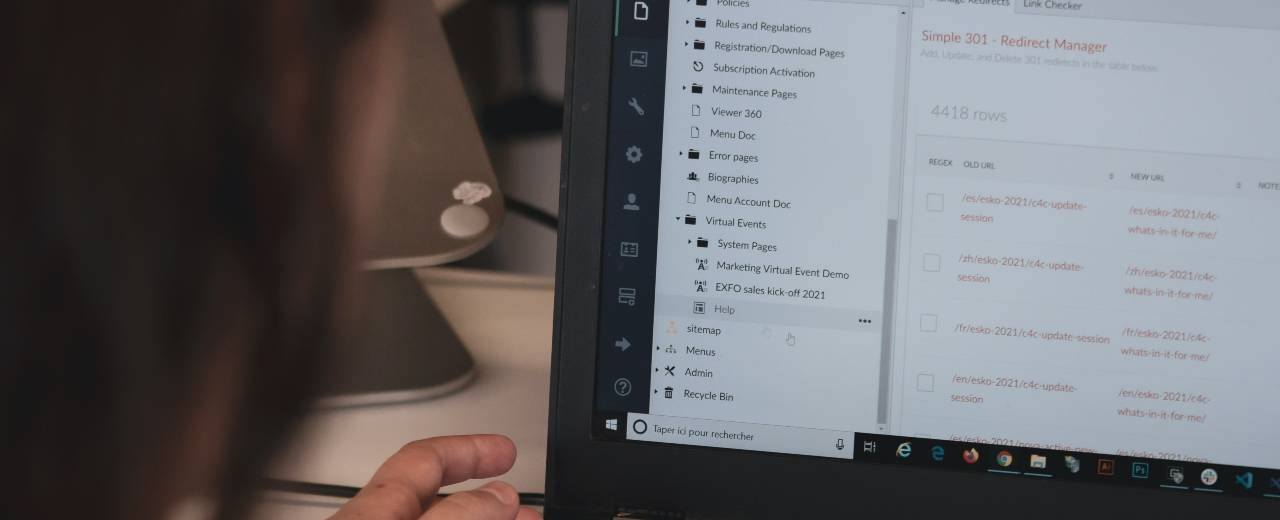Link Building in SEO: The complete guide (for 2024)
Link Building in SEO will be a crucial part of your digital marketing or content marketing campaign. But how does this work, and what do you need to get right? Read on to discover all the answers you need.
What Is Link Building in SEO?
If you are running an SEO campaign for your brand, we guarantee link building will be part of the plan. Simply put, building good links refers to the process of getting other websites to link to your site online.
Getting high quality links – we’ll return to this idea – will ensure you can compete online against your rivals and build up your ranking. If you don’t build links, you’ll struggle to get the support from the search engines or the interest you need to succeed online. It can even give you a competitive advantage. According to Ahrefs, more than 66% of pages have no backlinks.

What Is A Backlink?
A backlink is the result you gain from link building. Also known as a hyperlink, it connects one website to another.
Backlinks can appear anywhere on a website, but will usually be found within the main content web pages or article as a link from a word or phrase (known as ‘anchor text’). The idea is that they fit seamlessly as part of the great content.
One of the easiest ways to think about backlinks would be as conversations between websites. For instance, a blogger might create an article about movie news. Another blogger could have a different perspective and link to the first blogger’s work to provide more context to her ideas. This forms a backlink.
If the blog is well researched and popular, numerous other blogs will link back to it. The number of links to your website is important. But, not all external links are equal, as you’ll see.

Why Is It Important For SEO? The Benefits Of Link Building
While the variables in a search engine’s algorithm that determine search rankings or page rank are constantly changing, link building remains a fundamental ranking factor. More backlinks from high quality sources will typically boost your site ranking.
Link building is crucial for a few reasons:
- Credibility – Backlinks show your site is credible. They act as indicators that other resources trust your site online, increasing your level of domain authority. Since Google and other search engines aim to provide users with the most relevant results, this becomes essential. This is also why you should always aim to only build links back from authoritative sites.
- Ranking – As mentioned, link building is important to build up the rank of your site. Many experts argue it’s impossible to rank without this strategy. To rank, you’ll need more backlinks than your competitors and beat them in terms of quality. Google claims backlinks are one of the top 3 ranking factors.
- Web Traffic – Link building is a great way to attract audience members of industry authority sites. This improves traffic from external sources. Web traffic is a strong indicator of a healthy site.
- Bounce rates – Quality backlinks are ‘linked’ to lower bounce rates. A bounce rate is defined as the ‘number of one page sessions’. Or the number of people who only viewed one page before leaving your site. You want this number to be as low as possible.
- Referral Traffic – After you have established a link with an authority site, this should provide you with regular traffic. This is more beneficial than typical ads. Once an ad is finished, it no longer provides traffic. As such, link building can be a long-term strategy for marketing success.

The Types Of Link Building In SEO
There are numerous types of link building. It’s important to ensure that you choose the right type. The wrong option here can lead to problems. Google hates spammy links or links of low quality. Using these will always risk the integrity of your brand and your marketing campaign.
It could even earn you a penguin penalty, causing your ranking to drop through the floor, and that’s the last thing you want. Here are some options to build links that you can explore.
Editorial Links – These natural links are ideal for SEO purposes. You don’t ask for these links. Instead, other website owners provide them. Generating these types of new links can take time. Content creation is the focus here. You must produce an exceptional piece of content that attracts interest from bloggers and influencers alike.
Outreach Link Building – This is the most typical form of link building. Here, you’ll need to contact website owners or webmasters and ask them to link to your site. Similar to editorial relevant links, there needs to be a reason for them to do this. You must provide a mutually beneficial relationship. You should also contact sites relevant to your website.
Self-Created Links – This type of link building should be avoided. It’s often considered a ‘black hat seo’ practice that will earn you a Google penalty. Links are often devalued too. There are countless examples of self-created links, including article directories, press releases, blog comments on unmoderated sections of the web, guest post signatures and much more.
These will still work for certain types of websites. However, using them will always be risky. Instead, you should focus on ‘white hat’, editorially given links. The type of links will also depend on the value provided to your own site or business.
Don’t forget internal links, either. Linking from relevant page to relevant page within your own site is important work. It helps Google search your website more easily, and it helps add context to your visitors.
You should also understand the difference between ‘follow’ links and ‘nofollow’ links. Not all backlinks give you a benefit to gain you a benefit in the SERPs (search engine results pages).
A nofollow link to your site is something you won’t notice on the page. It’s written into the HTML of the page to tell search engines to ignore the link to your website. It’s a good thing to have a mix of ‘follow’ and ‘nofollow’ links to your page. It’s natural and looks natural to search engines.
These links benefit readers who click a ‘nofollow’ link to your website. This type of link, however, does not gain you any ‘SEO power’ from the page linking to your website.
How To Tell Between Good And Bad Backlinks

We’ve already mentioned the idea of a quality backlink. So, what does this mean? High quality links are from websites that switch strong levels of authority that will help you rank higher. It’s important to recognise these when building your link profile. These are some factors that determine whether a link is good or bad:
- Relevancy – It’s crucial the backlink is relevant to your business. If it’s not, Google will devalue it. For instance, if a site provides marketing services, a backlink from a page that provides tyre repairs won’t help. You need to be in the same niche.
- TLDs – Relevance can also be impacted by the TLD of a site. If a site is relevant, it will probably use the same or similar domain extension. This is why many website owners try to get links from local sites.
- Freshness – Think about how often new content is published on the site. This will determine whether it’s active. Nothing new for months or even years suggests the site has been abandoned. This could be due to one of those pesky penguin penalties.
- Penalties – Even if the site still delivers fresh content, it could still have a penalty. You need to check that a website is indexed. The easiest way is to type this “site:thesitename.com” in Google. There are also services, such as Monitor Backlinks, that allow you to check for issues here. Be aware a site can be indexed and still have a penalty. That’s why you need to check its ranking too.
- Domain Authority – Domain authority is one of the most important factors that determine whether a backlink is good or bad. Ideally, you need to ensure that you aim for backlinks from sites with a domain authority of more than 50. Getting started, you should aim for sites 30 or above. You can check this using domain authority tools, such as Google’s own SEO Site Tools.
- Engagement – You should check the level of engagement a website receives. Ideally, you should find websites with high levels of engagement. Evidence of this would include many comments on different posts or fan engagement through social media. More user engagement typically leads to high quality links.
Some Link Building Examples

The best way to understand the benefit of link building in SEO is by exploring real case studies. For instance, ahrefs created a complete list of SEO statistics. This was sent to more than 515 emails and received 36 backlinks from 32 websites. The campaign was successful, as the page currently ranks number 1 in Google for the keyword “SEO stats.”
The statistics page was chosen for a backlink strategy, because articles like this tend to have numerous links. They also often generate countless external links. Ahrefs used these factors to create a stat article around a winning topic, and then explored link prospects.
They then explored the stats that were the most popular for backlinks on other pages, and ones where there was a reason for websites to use the new page, rather than the older one they were linked to.
The team started with more than 1900 potential sites for backlink opportunities, and quickly narrowed these down to a number that was more manageable. They focused on websites that achieved high volumes of traffic.
After sending out emails to site owners, 473 delivered and 42 bounced. Conversion rates were 5.7%, and the company received links from sites they hadn’t contacted. Some websites also link to the page more than once. In terms of the quality of the backlinks, 9 of the 32 domains had the authority of more than 17, while 12 had an authority of between 40 and 69.
The business also noted in their case study that they could have achieved better results if they had chosen to negotiate with potential prospects and send follow-up emails. Based on Authority Hacker’s study, which included 600,000 emails, sending three follow up emails will double the results.
Another example would be the results achieved by Sure Oak SEO for Responsify. Inbound marketers, responsify were interested in building up their authority with a link building campaign. After completing a technical audit of the site and keyword research, several link building strategies were chosen. The main focus was on strong editorial links.
They used guest posting on high authority websites to boost awareness with key audience groups. A scholarship campaign was also established to acquire more than 80 .edu links. This helped ensure that the level of domain authority did increase significantly.
The domain authority of Responsify’s site was raised to 30 and more than 345 linking domains were achieved. This was an increase of more than 87%. Organic monthly traffic increased by 582% against the previous year, and the website also witnessed an 810% surge in organic monthly users.
Other companies, including The Upper Ranks, have explored how important link building is for an SEO campaign. To do this, the company set up a site purely for SEO experiments. The business published 26 high quality content for the site, with no promotion at all. After 12 months, there was virtually no traffic to the site.
Over the next 6 months, the company completed outreach and sent about 1000 emails. This results in 103 links. The average domain rating for these links was 38, while 27 links had a DR of more than 50. 96 were also from an educational resource, and this makes them significantly more valuable.
Overall, the results showed that link building caused a 2000% increase in organic traffic to the website. The website also ranks for more than 9000 keywords, and over 2000 of these are on page one. This is perhaps the clearest evidence right now that link building is important. You just need to approach it the right way.
How To Check How Many Backlinks You Have To Your Website

Now, you might wonder whether you already have backlinks to your website. Unless your site is brand new, you probably already have a few. But if you haven’t engaged in link building, it’s unlikely these will be high quality backlinks or of much use to you.
There are numerous tools online that you can use to check how many backlinks you have. For instance, MOZ has a Link Explorer, which is a great backlink checker. You can use this for any site online, as well as you own. So, it’s great if you’re completing research to find out which sites you should be targeting.
The tools provide key information, including:
- Page authority
- Domain authority
- Spam score
Many of the tools available are free. However, you can also think about investing in the pro version for more capabilities. Using the tool is easy, as you just need to enter the URL for your site or any site that you are interested in.
From the results, you can then click on the inbound links tab. You can also export the data and sort it by page authority. This is a great choice if you are looking for key pages that you want to target. It should provide you with a solid picture of your backlink profile and the goals that need to be part of your link building strategy.
Don’t forget internal links, either
Linking from relevant page to relevant page within your own site is an important job. It helps Google search your website more easily, and it helps add context to your visitors.
You should also understand the difference between ‘follow’ links and ‘nofollow’ links. Not all backlinks give you a benefit to gain you a benefit in the SERPs (search engine results pages).
A nofollow link to your site is something you won’t notice on the page. It’s written into the HTML of the page to tell search engines to ignore the link to your website.
It’s a good thing to have a mix of ‘follow’ and ‘nofollow’ links to your page. It’s natural and appears natural to search engines. These links benefit readers who click a ‘nofollow’ link to your website. This type of link, however, does not gain you any ‘SEO power’ from the page linking to your website.

What Is A Link Building Strategy?

Once you have explored how many backlinks your site has, you will need to ensure that you set up the right link building strategy. A link building strategy is a process you take to gain the links you need from other sites online.
As mentioned, this will help ensure that you can grow the audience for your website and ensure that traffic increases. There are numerous elements to a link building strategy:
- Understand Your Audience – Understanding your audience will help you recognize who your site is for and what other sites you should be targeting. Link building strategies often lead to website owners seeking new audiences. As such, you need to understand who your audience is, as well as the traits of your ideal target audience. This will help you establish the right link building strategy. It will also help ensure that you build content that appeals to the new audience.
- Write A Website List – In each of the case studies explored above, the businesses created a list of websites that could be useful or relevant for them. Remember, this should focus on sites with a high domain authority and help you reach your new audience. You should explore the key factors for finding good quality links to do this that we mentioned above.
- Outreach – When you have a list of websites that you want to connect with, it’s time to put together an outreach strategy. If you have high quality content and make an effort to find relevant businesses, you shouldn’t have any trouble finding sites that want to link to yours. You just need to provide the right information and approach this the right way. We’ll explore this a little further down. You can reach out through many resources, including email and social media. Social media can be a great option for link outreach, because you can highlight blog posts and send it directly to people who would be interested.
5 Link Building Tactics You Can Use

There are numerous link building strategies that you can explore. The right choice depends on your goals, as well as your current link profile:
- Skyscraper Technique – This was created by Brian Dean from Backlinko. It’s a way to create engaging content that produces high quality linkable editorial. The first step is to find content that is popular on other sites. You then need to create content that is better than this and promote it to the right target audience to let them know it actually exists. This can be as simple as a stats page with more up-to-date statistics.
- Scholarship campaign – As the name suggests, with a scholarship link building strategy, you need to reach out to places like schools, universities, and educational institutions. When doing this, it’s vital that your campaign stands out from the rest. Many marketers send cold emails to educational organizations for this purpose. When you send emails to educational organizations, they tend to fire back questions. Don’t send all your emails at once. Stagger your campaign so you can make the necessary quick changes.
- The Broken Link Technique – One of the easiest ways to gain backlinks is with the broken link strategy. First, you need to find a few relevant sites with high authority. You can then explore their backlink profile using one of the tools. Find a link that matches the content on your site that is broken. There are more tools online that will allow you to do this quickly and easily. Once you find a broken link, send a polite email to the site owner. Notify them of the issue and offer your page as a potential replacement. Usually, if you provide high quality content, they will accept this offer.
- Guest Blogging – Hubspot suggests the average blog generates about 97% more inbound links and a 55% increase in site visitors. Guest blogs are great, as well as a chance to build a backlink. You can also reach an entirely new audience for your business. To get the right impact with guest blogging, you need to ensure that you are studying the audience of the blog and the type of posts that are most popular. You should also look at the user experience to understand who you are writing for and what exactly they expect from the content you create. Many businesses can build an entire marketing campaign around the process of guest blogging.
- Use Resource Pages – Alternatively, you can think about resource page link building. This can be an effective choice, resource pages are created for the sole purpose of linking out. As such, it makes sense to use them as link building targets. First, you need to make sure you find resource pages. You can then size up the page as quickly as possible to find out whether it’s worth your focus. Domain rating is a key aspect here. You can then contact the owner of the page to check whether they are interested in linking to your resource.
The Impact Of Good Content On Your Success

It’s clear that there are numerous factors that will term whether your link building strategy is successful. For instance, you need to think about your outreach plan and the business sites you are targeting. As mentioned, these need to be relevant to your business. However, a fundamental part of whether your outreach plan will be successful depends on your content creation.
You need to ensure that there is a wealth of high quality content on your site. Let’s say you decide to use the broken link building method to build up links. This will only work if the site owner is willing to connect to the new page. They won’t if the content doesn’t provide the quality they want.
So content is definitely key for your link building campaign. However, it needs to be the right content. Certain types of content are more likely to generate links. This includes:
- Visual assets – That includes images, infographics, and diagrams. Anytime someone shares info like this, you’ll get a link. You can’t access this type of relationship with typical pieces of content.
- List posts – List posts can be anything. Whether it’s a list of techniques, myths, or reasons, you’ll get backlinks. Indeed, a high quality list post generates more backlinks than most other choices, according to BuzzSumo. They found this out after researching a million different sites.
- Original Data – New data means fresh information relevant and interesting to site owners and their audience. When data like this is cited, a business always adds a reference to your site. These links will quickly build up and provide the high quality backlinks you need.
- Ultimate Guides – Guides that are in depth will definitely boost backlink numbers. A guide like this should provide everything you need about a particular topic. You will often find this on marketing sites, and if you think this article is an example of this type of content, you’d be right.
Apart from the type of content you focus on, there are certain little details that you need to get right. For instance, you need to ensure there are no spelling or grammar issues throughout the article.
Any statistics or facts that you give should be correctly cited. In terms of the content itself, you must ensure that it provides useful, interesting, or appealing information that matches the interests of your target audience.
If you are using links through the content, and you should be, make sure they are relevant and fit seamlessly, providing more content to the information you are offering readers.
You should work on levels of engagement too.
Higher levels of engagement will attract more backlinks for your business. So, make sure you share the content on social media.
How To Do Your Own Backlinks

Now that you know all the important details about backlinks and why they matter, you have a vital question to answer. Are you going to use a professional service or build up your own backlink profile? If you are building up your own backlinks, there are a few key steps that you need to take.
First, you need to think about what your goal is for your site and your brand. Remember, it’s not always about building up the ranking.
Many business owners are more interested in increasing the domain authority, and this can be incredibly useful. For that, you will need a lot of links. Once you have decided on your goals, you can move onto your content.
To gain the interest of business owners and website owners, the content must be appealing. Make sure you spend a few months building up content for your site.
Remember, in one of the case studies, the business spent six months building content before they even considered reaching out to different clients. This is a smart way to tackle the issue.
Once you have done this, you can focus on outreach. It’s important to complete the right research and find the sites that will provide the high quality backlinks that you need. There are lots of tools that can help you do this. These are the same tools that a marketing company would use.

Remember, when you use tools like this, it’s important to check the backlink profile and various other metrics. You need to gather as much information as possible to ensure that you have found a high quality site.
After that, you have gathered a solid list of prospects – the more you have, the more chances of success you’ll give yourself – you can start the outreach process. As noted, there are numerous ways to tackle this possibility.
However, you should think about writing an email. For this, you need to perfect your email script. You’ll find countless examples online. The trick is to keep these outreach emails polite and ensure they are straight to the point.
Pay close attention to the subject of the email. This is what you need to get right to ensure a good open rate stat. Remember, popular sites will get countless emails like this every week. You need to make sure that you seem likeable and that your request stands out from the rest.
The trick is to hone in on why it’s beneficial for them. This could be as simple as replacing a link they already have or improving a link. Don’t forget, some will want to negotiate, and there’s nothing wrong with providing a favour in return for a link.
You want to avoid paying for them. This is a black hat practice that must be avoided at all costs. If you pay for links, they will be devalued.
Understanding how link building works and why it could be a benefit for your business will provide a massive boost to your marketing campaign. Using this tutorial guide, you can beat the competition and gain the results you want.
Contact us at Digital Business for help with your link building!
Our Offices
Digital Business is a UK-based SEO and content marketing agency with clients in healthcare, manufacturing and home care. We help SMEs who need effective digital business development.
Bourne
20, Austerby, Bourne, Lincolnshire, PE10 9JG, UK
Lynne Cullen
lynne@digi-business.co.uk
Southport
16, Hereford Road, Southport, Merseyside, PR9 7DX, UK
Will Hawkins
will@digi-business.co.uk
